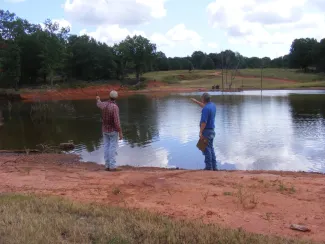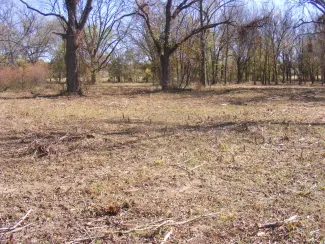As we come into the spring season, a lot of us are looking for signs of new life in all aspects of the world around us. For those blessed to be landowners or land managers, the search for “new life” may start on their property.
Whether you are a new owner or manager - or have been at it for decades - trying a new or different management technique that brings new life to your property can be a daunting task. Fortunately, in this day and age, there is a ton of resources that can help; many websites, electronic publications, YouTube videos, books, magazines, and a host of groups and organizations are available. Really, we are almost drowning in information and the difficulty becomes identifying “where can I get the most applicable help or advice on implementing this project.”
For habitat management projects, the Wildlife Department can help navigate the various project aspects needed to reach a desirable end goal. Let’s take a few minutes to unpack our services:
Technical Assistance: Our Largest “Catch-All” Service Category
Technical assistance can be anything from a phone call or email with a scenario or request for accurate and up-to-date information to an on-site visit from a biologist. Our private lands biologists can visit with you about your property goals, management objectives, available equipment or material, and timeline for your habitat project. They can also develop a management plan that provides guidance and direction to bring your vision into reality.

Private lands biologists are available statewide to help landowners achieve their fish and wildlife goals.
The Wildlife Department is focused on managing Oklahoma wildlife and fish species along with their native habitats. With that mission in mind, we can work with you to integrate habitat management into your overall land management goals. While we can provide contact information for guidance on the best agricultural crop to plant in a food plot, how to commercially manage your timber, or how to increase grazing capacity on your pastures, our focus remains on restoring, enhancing or protecting wildlife and native habitats.
Cost-Share Assistance: Getting the Most Habitat for Your Dollar
Budgetary considerations often follow on the heels of the initial project idea. Unfortunately, not all habitat work is cheap. In addition to providing technical assistance, we can also provide guidance on which cost-share programs may be available to help implement your management plan. From the Wildlife Department’s Wildlife Habitat Improvement Program, to the Grassland Restoration Incentive Program, to pollinator and other wildlife-friendly programs, our biologists can use their network of contacts to help connect you to the right financial assistance program. These programs aren’t designed to lift the full weight of the project, but to help stretch your dollar to get more “good on the ground.”

Cost-share programs help landowners enhance wildlife habitat through timber thinning, creating forest openings, cedar cuttings, wetland development, and many more practices.
Training: Virtual and Hands-on Practice
Again, there are so many sources of information and virtual trainings available on the world’s “information highway,” but nothing beats getting to see something with your own eyes, do things with your own hands, or be able to ask a real person follow-up questions for clarification. Between our education and work backgrounds, our fellow Wildlife Department coworkers, and colleagues in various non-government organizations, universities, and associations, Wildlife Department biologists hear about and get invitations to a number of field days and training opportunities. When we hear of an upcoming opportunity, we will happily pass on the information. If you want to see something in action or have the chance to get hands-on practice, let our private lands staff know. We can connect you with existing opportunities, or potentially host a field day.
If you are a landowner looking for wildlife and native habitat focused technical assistance, cost-share opportunities or training and feel overwhelmed or lost, reach out to us. We’d love to help you out.